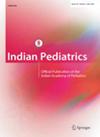儿童对印度儿科学会(IAP)每日可允许屏幕暴露指南的依从性——一项来自印度南部医院的横断面研究
IF 1.7
4区 医学
Q2 PEDIATRICS
引用次数: 0
摘要
本研究使用一份预先验证的问卷,评估了771名3个月至14岁儿童对IAP每日允许屏幕暴露指南的遵守情况。平均(SD)筛查时间(ST)为2.62(1.44)小时,年龄儿童的依从率分别为1%、8.8%、3.2%和24.6%本文章由计算机程序翻译,如有差异,请以英文原文为准。
Adherence of Children to the Indian Academy of Pediatrics (IAP) Guidelines on Permissible Daily Screen Exposure-A Hospital-Based Cross-Sectional Study from Southern India.
This study assessed the adherence to IAP guidelines on permissible daily screen exposure in 771 children aged 3 months to 14 years using a pre-validated questionnaire. The mean (SD) screen time (ST) was 2.62 (1.44) hours, with adherence rates of 1%, 8.8%, 3.2%, and 24.6% in children aged < 2 years, 2-5 years, 6-10 years, and 11-14 years, respectively. Factors like age, siblings, family size, school type, and home gadgets significantly influenced ST. Novel strategies and implementation techniques should be adopted to improve adherence among children.
求助全文
通过发布文献求助,成功后即可免费获取论文全文。
去求助
来源期刊

Indian pediatrics
医学-小儿科
CiteScore
3.30
自引率
8.70%
发文量
344
审稿时长
3-8 weeks
期刊介绍:
The general objective of Indian Pediatrics is "To promote the science and practice of Pediatrics." An important guiding principle has been the simultaneous need to inform, educate and entertain the target audience. The specific key objectives are:
-To publish original, relevant, well researched peer reviewed articles on issues related to child health.
-To provide continuing education to support informed clinical decisions and research.
-To foster responsible and balanced debate on controversial issues that affect child health, including non-clinical areas such as medical education, ethics, law, environment and economics.
-To achieve the highest level of ethical medical journalism and to produce a publication that is timely, credible and enjoyable to read.
 求助内容:
求助内容: 应助结果提醒方式:
应助结果提醒方式:


